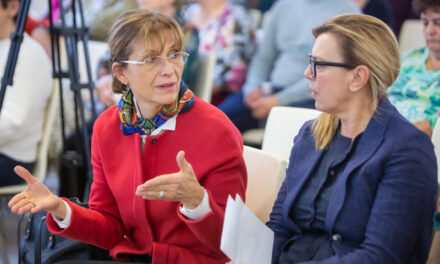In Hungarian culture, several customs are associated with Pentecost. Several of their elements date back to pre-Christian times. It can be traced back to the Roman floralias, which were festive occasions to welcome spring, when the goddess Flora, the goddess of flora and flowers (in a broader sense, fertility) was greeted.
May tree statement
In most of the Hungarian-speaking areas, a maypole was traditionally erected on the night of May Day. Another notable occasion was Pentecost. In many places, the trees planted on the first of May were taken down at Pentecost. The May tree, the green branch, is a symbol of the renewal of nature, and in most cases it is proof of the intention of courtship, it is also a gift of love. The boys organized the maypole in groups and put it up for the girls, for whom it was a great honor. Tall, gnarled trees were suitable for this, which were attached to the fence post at night or early in the morning. It was also decorated with colorful ribbons and food and drink. It was usually set up under the leadership of the courting bachelor, but in some areas the bachelors also set up a tree for related girls. Communities often had a common tree, the felling of which was accompanied by a celebration and dancing.
Pentecost King election
A custom known since the Middle Ages, at that time the right young man was selected in a skill competition (carrying a log, throwing in a hoop), who could later lead the others, and the King of Pentecost was an official at all weddings, parties and celebrations, he could drink for free in the pubs, his consumption was paid for by the community later. This position lasted for a week or even a year. It was often on this occasion that bachelors were initiated, who could now court and go to pubs.
Spring greeting
Early in the morning, green branches and flowers (elder, peony, jasmine) are stuck in the windows or between the fence slats of the house to prevent lightning from striking the house. Sometimes green branches were placed on the girl's houses.
Queen's visit to Pentecost
Originally, four (later more) older girls took a fifth one around the village. She is the smallest, the most beautiful. They sing and repeat good wishes. They stopped in the courtyards, then stretched a cloth over the head of the Pentecostal queen or covered her with a veil. They sang, while they walked around the queen, and at the end they lifted her up and said fertility magic rhymes. At the end of the songs and rhymes, they received a gift. The custom associated with fertility magic typical of Transdanubia was later combined with fundraising.
Pentecost
At that time, the Pentecostal king and queen couple were shown with their entourage, but there was also a wedding procession with the bride and groom. The custom is similar to the Queen's visit at Pentecost, but this was primarily for fundraising. The group of children or young people went through the village singing and dancing and collected donations.
Turkish fuck, boar king, prison walk
They were typical in some regions of Western Hungary at Pentecost. A little boy was dressed in trousers stuffed with straw by his friends, imitating a Turkish basa. They escorted him from house to house and beat him with a stick in the yards to make him jump. They received money and eggs in exchange. The Pentecostal prisoners are also boys, who, chained by their feet, go around the village to the girls, with the request, "Help these poor military prisoners." Of course, they also return home with gifts. During the badger walk, a boy wearing a cloak made of elder is escorted around the village.
Source: mavan.hu
(Cover photo: Queen's visit to Hollókő for Pentecost. Photo: Ágnes Huszár )













